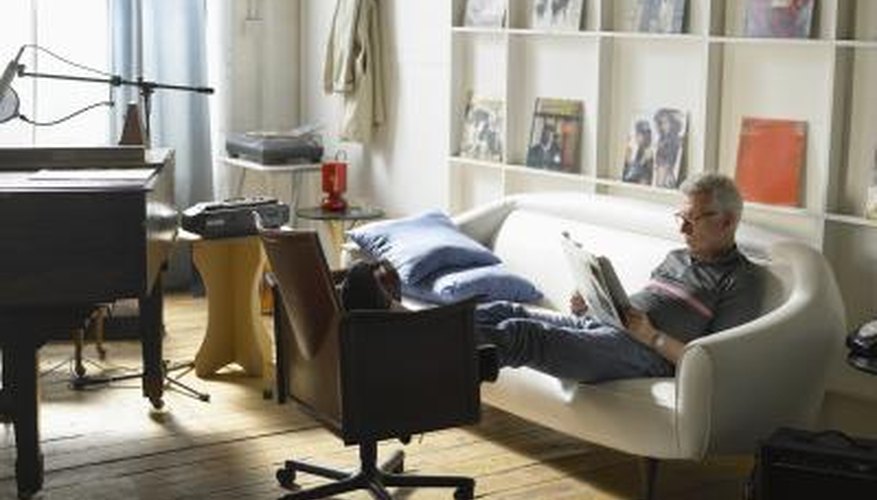Vinyl flooring is frequently used in homes because of its durability, cost-effectiveness, aesthetic value and its easy-cleaning characteristics. One common problem with vinyl flooring is that sheet vinyl can frequently form air bubbles that cause an unevenness to the floor surface and affect its overall appearance. These bubbles occur during installation but sometimes go unnoticed for an extended period of time. Removing air bubbles from underneath vinyl flooring requires some careful work but is not difficult.
Puncture the bubble with a canvas needle or the tip of a razor blade.
Iron out the punctured bubble with a 45.4kg. floor roller, which can be rented cheaply from a rental yard. If you don't have one available, use a kitchen roller or wrap a heavy piece of wood in a towel and place it on top of the bubble so you can kneel on it. You want smooth, even pressure to even out the two sides of the bubble. If the two sides of the bubble are overlapping, trim the excess with sharp scissors. This technique works best for bubbles of 6 inches or less.
- Vinyl flooring is frequently used in homes because of its durability, cost-effectiveness, aesthetic value and its easy-cleaning characteristics.
- If you don't have one available, use a kitchen roller or wrap a heavy piece of wood in a towel and place it on top of the bubble so you can kneel on it.
Seal the two sides of the bubble together again with vinyl flooring seam sealer, which is found at any hardware store.
Drape a piece of cloth over any larger bubbles and apply a hot iron to the cloth. This helps soften the floor and may also help the bubble flatten and re-bond with the floor adhesive.
Cut the bubble with the razor in an X pattern and carefully peel back the floor pieces. Inject adhesive underneath each piece and then flatten the pieces down again, wiping away any excess adhesive that comes through the surface with a rag. Weight down the drying floor section with a cloth and wait for at least six hours.
- Seal the two sides of the bubble together again with vinyl flooring seam sealer, which is found at any hardware store.
- Inject adhesive underneath each piece and then flatten the pieces down again, wiping away any excess adhesive that comes through the surface with a rag.
Cut around the edge of the tile with a razor if the bubble has not gone away. Lift up the edge of the tile and scrape out the older adhesive with the razor. Apply fresh adhesive to the back of the tile and flatten it back down, weighting it down again with a cloth and a weight on top of it.
Replace the entire tile if you are not happy with your earlier results. Cut the tile out in a square and remove any adhesive still stuck to the flooring underneath. Cut a new tile out that matches the old one, since many vinyl floors come as a sheet. Apply fresh adhesive to the new tile and carefully lay it down to ensure no new bubbles form. Weight it down overnight.
